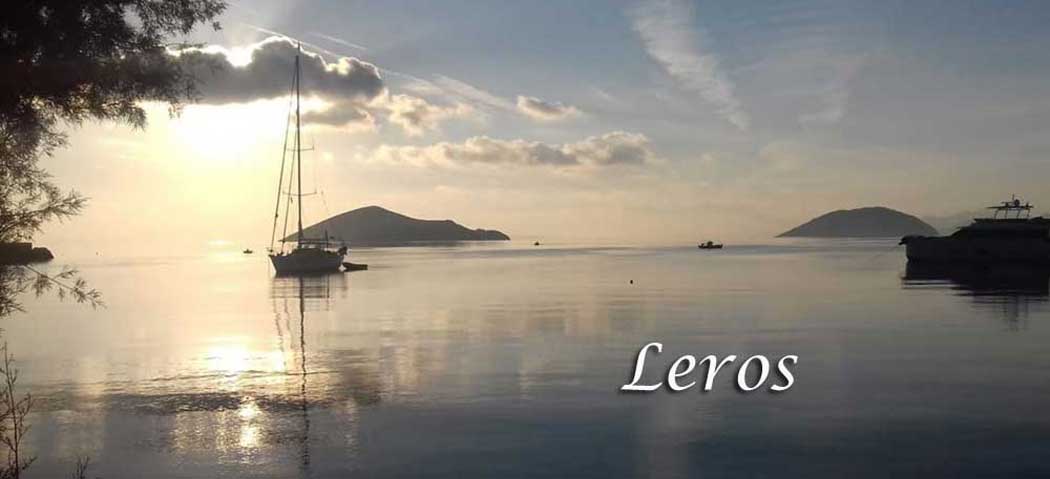The battle of Leros during the second World War
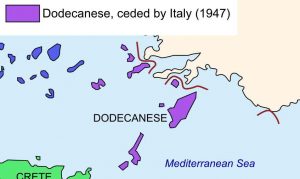 With the Treaty of Lausanne, the Dodecanese belong permanently to Italy. Mussolini’s Fascism, which took over Italy in the days of post-war poverty and unrest, had been promised to its people a lot. In order to be supported and held, he had to show strength. The power over the weak is easily shown, even if it still does not really exist. The Dodecanese people, thrown unconditionally under the shiny black boot of black fascism, were small in the face of the Great Power of Europe, Italy.
With the Treaty of Lausanne, the Dodecanese belong permanently to Italy. Mussolini’s Fascism, which took over Italy in the days of post-war poverty and unrest, had been promised to its people a lot. In order to be supported and held, he had to show strength. The power over the weak is easily shown, even if it still does not really exist. The Dodecanese people, thrown unconditionally under the shiny black boot of black fascism, were small in the face of the Great Power of Europe, Italy.
It implements its program, or the Government of the Acquisition of the Islands, a program that is implemented systematically. Economic pressure, Education, Church, Municipal Administration. Four goals. By conquering these goals he will annihilate every force of the people, he will annihilate them. Finance is The first goal.
Leros at the time of occupation by the Italians
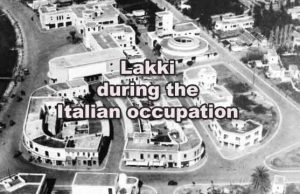
The Italian Commercial Company of the Aegean (Compagnia CommerciaIe Italyiana Aegeo) says “All the imports and all the wholesale trade passes through our hands and our merchants thrive”.
Taxes increased little by little, but systematically. Implementation of stamps on the licenses of shops, tax on the wine, closed wine, etc. The city plan in Lakki changes as it becomes a military port and is closed for foreign flagged ships.
The city plan takes almost all the vineyards of Lakki. Expropriation in favor of the Municipality of Lakki, which is an Italian municipality, and thus importent for the armament of the island. T he armament of Leros by the Italians began after the First World War and gained momentum and intensity in the Italian-Abyssinian War, but for this all artillery was needed in the mountains, the forest area was large and neither expropriation was needed. No compensation of course, prohibits the cutting of bushes, the fields become forested and automatically become the property of the State.
With this plan of fortification, most of the fields escaped from the hands of the villagers. This is how agriculture is beaten and at the same time livestock that is deprived of food. But the beautiful partridges and the rabbits find shelter. This is needed for the entertainment of the Italians. Few Lerians have a hunting license.
Farmers must resort to the labor wage. Part-time hunger. They fall into the dependence of the local commander. There is work and workers from other islands are invited. Even from as far as Karpathos. Cement and iron were loaded on Leros: Naval Base with submarines, destroyers, torpedo boats, , etc., with 6,000 personnel. At Gonia, the Ai Giorgis airport, with military aircrafts at Lepida. Auxiliary services and air force 2,000 men. Artillery at all peaks. One hundred and five cannons planted in the mountains of Leros.
On September 3, 1943, Italy capitulated by the Allies and on October 13 declares war on Germany.
THE FORCES OF DEFENSE
The English Prime Minister Churchill in the History of World War II writes:’ The guard we had at Leros was limited to the formation of a single brigade. There were three British battalions that had been excluded from Malta and the famine, and had not yet fully recovered from the point of view of their physical strength.
In other words, it was around three thousand, eighteen cannons and 515 tons of material. Leonard Marsland Gander, a war correspondent who was at the Battle of Leros, writes: “The fort seems to have been made up of about 3,000 Britons and about 8,000 Italians.
The British force consisted of a battalion of the Royal West Kents and a battalion of the Buffs. There was also a battalion of Royal Sovereignty. A group of Buffs sank at sea to the Island, but according to the information most of them gathered and returned to Alexandria “.
The total strength of the Italians according to their archives were at 8 of September: Regular 7,602 and 697 Marines and Air Force 20 aircrafts. In the History of the Italian Navy we read: “For all the needs of the defense, A total force of about 8,000 men was present, of which about 6,000
26 SEPTEMBER 1943
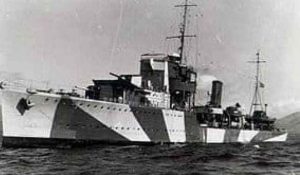
But the artillery had airphones.
Those who were in Lakki at that time, heard the alarm of “Queen Olga” and after the Fire (second wave jU 88). Captain Spingai forgets that there was still a Genoese artillery in Patmos, and in Levitha the observatory and the artillery of Markellos (Farinata) had airphones.
None of these points warned? The alarm was always given and after a few minutes we could see the planes. Two or three minutes would be enough for the result of that day’s bombing to be different. Our shepherds saw the planes when they were still in Levitha. It is strange how the Anti-Aircraft Defense Command from Patella did not point them out.
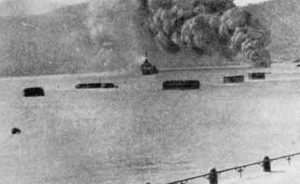
GERMAN AIR RAIDS ON LEROS
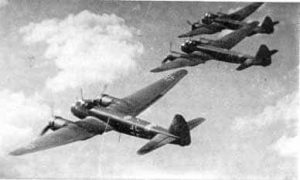
Fortunately, the population had already left the city and had plunged into the caves. So we did not mourn the victims. The neighborhoods of Agia Paraskevi and Christos received the most bombs, which were probably intended for Merovigli, the center of the air defense, with the most perfect anti-aircraft cannons, of the latest type of 90.
Taxiarchis was not excluded, the cemetery, at the feet of Merovigli, above the city. The church was disbanded, crosses were scattered in the fields, from below, crosses from the memorials, bones of the dead and even hands and other members from corpses. It was a macabre image.
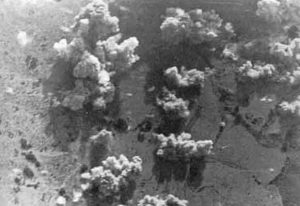
There was also a case of childbirth in the caves. An English or Italian blanket came to be a screen and to separate the midwife from the public. The demonic whistling of the bombs, where they fell, broke even the strongest nerves, because those locked in the caves could not see the graphic spectacle of the bombs that fell nor the planes and they felt that they were far away. Fortunately, the weather was good for most of our life. Only in the days of the battle did he become fierce. At dusk general exit.
All roads are very busy. In Lakki it is shorter because there were shelters in the city and the distances were short. Unlike in the old town, Agia Marina-Platanos, they had to start from Panagies to come and see what was left in their homes from the bombings of the day. Suitcases on the shoulder, bags in the back, bags in the hands. Bottles of drinks, as a rule, replaced the currency in the food market, by soldiers, English and Italians, above all by English, because the Italians also accepted liras.
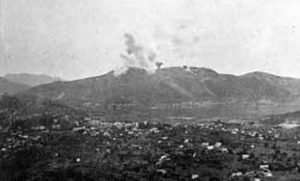
9 OCTOBER 1943 AIR STRIKE
All day from the caves, those who looked towards the city, we saw the bombs falling. They raised gray-black clouds of smoke and dust that kept us anxious until they disintegrated and we saw what was left standing. Many times we said: “There it goes Panagia tou Kastrou! there it goes ‘Agia Paraskevi’ “, but when we saw them in their place through the gray-black clouds from the bombs. But as scene of hell was being removed, the whole white church of the Virgin Mary appeared, an invincible consolation to tell us “the storm will pass”.
Only our Castle was seriously injured. This is the picture of life in Leros in the period from September 26 to October 31, 1943. It was already obvious how the Germans were determined to win the battle of Leros with every sacrifice. That is why they beat the defense to paralyze it and beat the civilians to ruin their morale. So they dropped bombs not only on military targets but also on the city, where there were no soldiers or civilians. Even in the churches.
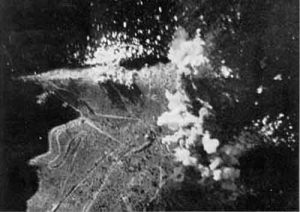
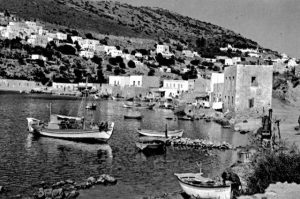
THE AIR STRIKE OF 26 OCTOBER 1943
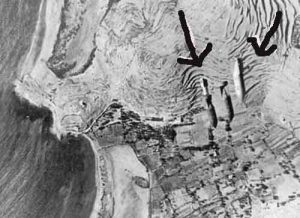
They came over the Patriarchate. I saw all the unloading and all the hell that was created in the city. The spectacle was terrifying. For a moment I believed what the uprooting of the whole city was like. I could not believed in my eyes. The city was still standing! But the color of the uphill from the old road Tsigada Passa, until Agia Paraskevi had changed.From most of the houses only a few walls were left standing.
Around the church of Agia Paraskevi almost everything was demolished. Dominated over the ruins the tall church with its small bell tower, a symbol of hope and faith, but also a historical monument, on which priest Papanastasis’s robe waved as if he raised the Greek flag in 1933. On the first of November, no bombs. Not the next day either. This rest lasted until November 6. “We spent six days only with sparse reconnaissance flights. We got discouraged, we came out of our caves, we talked: Another army has come? What is happening in Italy? In Russia? Do you think the Germans have forgotten us?
BEFORE THE GERMAN LANDING IN LEROS (NOVEMBER 11, 1943)
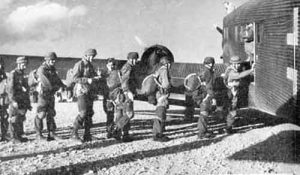
They knew the zones that were invisible from the artillery that they had to defend. The deep Lagada, opposite Piganousa, below Turtouras, behind the Castle, in the bay of Pitiki, between Brouzi and Aspri Pounta, from Kryfos to Pano Zymi and in the cove of Vagitas which they could approach even a thousand meters from the mainland. in fact, in the bay of Pitiki, from 1,500 meters away from the mainland, the amphibious was not endangered by the cannons of fires.
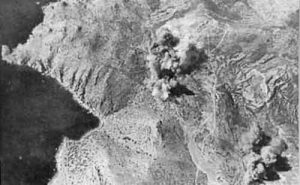
FIRST DAY OF THE BATTLE
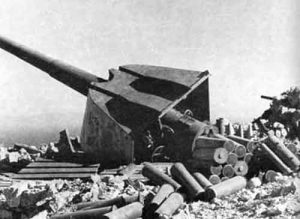
The shells of bright projectiles, golden red in the sweet light of dawn, came over them, from all over the northeastern side of the island. At one point the shells lifted the sea in front of the boats, so much so that at one point they rushed out of my sight.
Do they sank them? One of them stood out from the comrades, and sailing against them and from the left, he covered them with clouds of smoke. When the smoke had dissipated the ships seemed to be moving farther west, and soon came out of the field I could see.
Gander, from Merovigli was watching them, he writes that an Englishman next to him said to him: “if we had at least the Maltese gunners on the island, without delay they would have shaken the whole attacking gang”! The artilery of Brouzi is absolutely quiet, I do not see any movement. Perhaps the enemy ships were out of range of the 76/40 cannons.
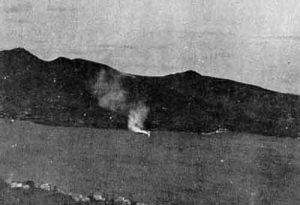
At the exact height of the church she received a first missile from St. Demetrius, which passed over her bow. It was followed by three on top of it in the middle and four more on the stern. At the same time, a black column of smoke rose from the boat. She made a sharp turn right towards the mainland, received four more at the stern and half-submerged approached the mainland, did not manage to reach it and sat in the shallows leaning to the right.
SECOND DAY
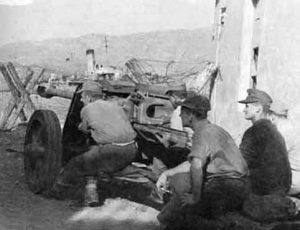
This is a great fortune for us, because that way we could sleep stacked in the caves. We guessed how they were throwing supplies and we expected that we would have reinforcements from the sea as well. The visits of the English planes continued until dawn. Cannonballs were fired from the sea at the Key, and fiery cylinders seemed to cross the curve in the dark and fall into the fort. And on the heights of Alindon we accepted some. They even seemed to be sent to Pitiki. It was fleet bombing, of course allied. At dawn, the sniper rifle started again, before the Stukas appeared, while the cannons did not stop all night.
15 NOVEMBER
At dawn on Monday 15 November found the Castle surrounded. From the rocks of Prophet Elias the Germans controlled his shattered door. But now the Castle had many doors. The German bombs had opened them. But they did not need the secret doors either, because neither reinforcements could enter nor exit was easy since there was no ground around in allied hands.
COCLUSION
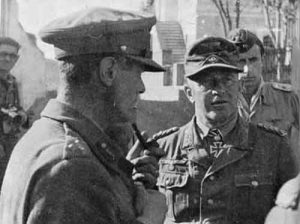
Thus once more the British went into battle against the Stuka dive bombers and the parachutists of the German Luftwaffe and suffered a heavy defeat despite some spectacular sea and land battles.On the 26 0f September 1943 the Germans attacking the Naval base of Laki with 25 airplanes JU88 and sank the Greek battle ship QUEEN OLGA causing also great damages to the British HMS INTREPID.
After almost 50 days of continuous air strikes they attempt the first landing on Leros on the 11 of November 1943.The island finally surrenders to the Germans on the 16 of November 1943.
